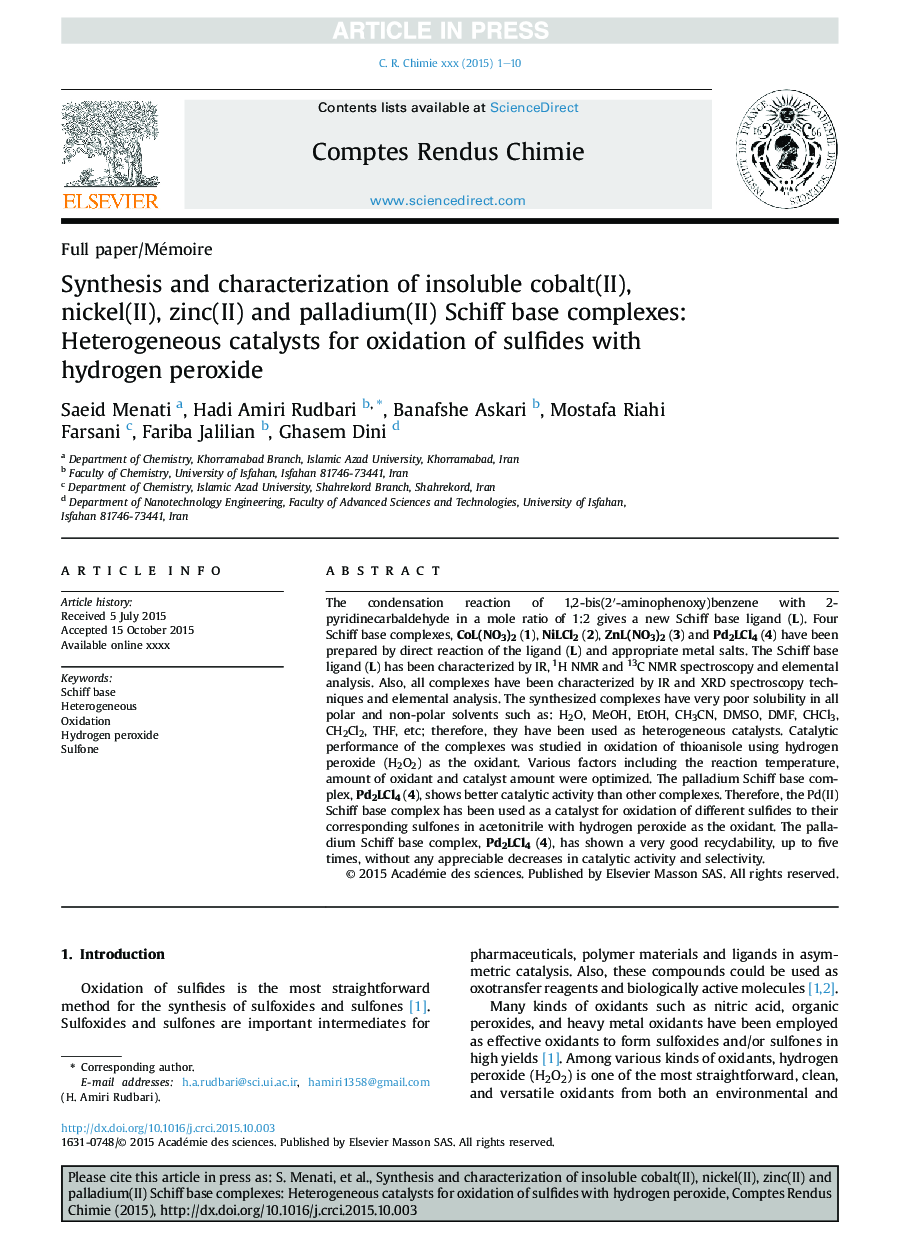| Article ID | Journal | Published Year | Pages | File Type |
|---|---|---|---|---|
| 10265104 | Comptes Rendus Chimie | 2016 | 10 Pages |
Abstract
The condensation reaction of 1,2-bis(2â²-aminophenoxy)benzene with 2-pyridinecarbaldehyde in a mole ratio of 1:2 gives a new Schiff base ligand (L). Four Schiff base complexes, CoL(NO3)2 (1), NiLCl2 (2), ZnL(NO3)2 (3) and Pd2LCl4 (4) have been prepared by direct reaction of the ligand (L) and appropriate metal salts. The Schiff base ligand (L) has been characterized by IR, 1H NMR and 13C NMR spectroscopy and elemental analysis. Also, all complexes have been characterized by IR and XRD spectroscopy techniques and elemental analysis. The synthesized complexes have very poor solubility in all polar and non-polar solvents such as: H2O, MeOH, EtOH, CH3CN, DMSO, DMF, CHCl3, CH2Cl2, THF, etc; therefore, they have been used as heterogeneous catalysts. Catalytic performance of the complexes was studied in oxidation of thioanisole using hydrogen peroxide (H2O2) as the oxidant. Various factors including the reaction temperature, amount of oxidant and catalyst amount were optimized. The palladium Schiff base complex, Pd2LCl4 (4), shows better catalytic activity than other complexes. Therefore, the Pd(II) Schiff base complex has been used as a catalyst for oxidation of different sulfides to their corresponding sulfones in acetonitrile with hydrogen peroxide as the oxidant. The palladium Schiff base complex, Pd2LCl4 (4), has shown a very good recyclability, up to five times, without any appreciable decreases in catalytic activity and selectivity.
Related Topics
Physical Sciences and Engineering
Chemical Engineering
Chemical Engineering (General)
Authors
Saeid Menati, Hadi Amiri Rudbari, Banafshe Askari, Mostafa Riahi Farsani, Fariba Jalilian, Ghasem Dini,
